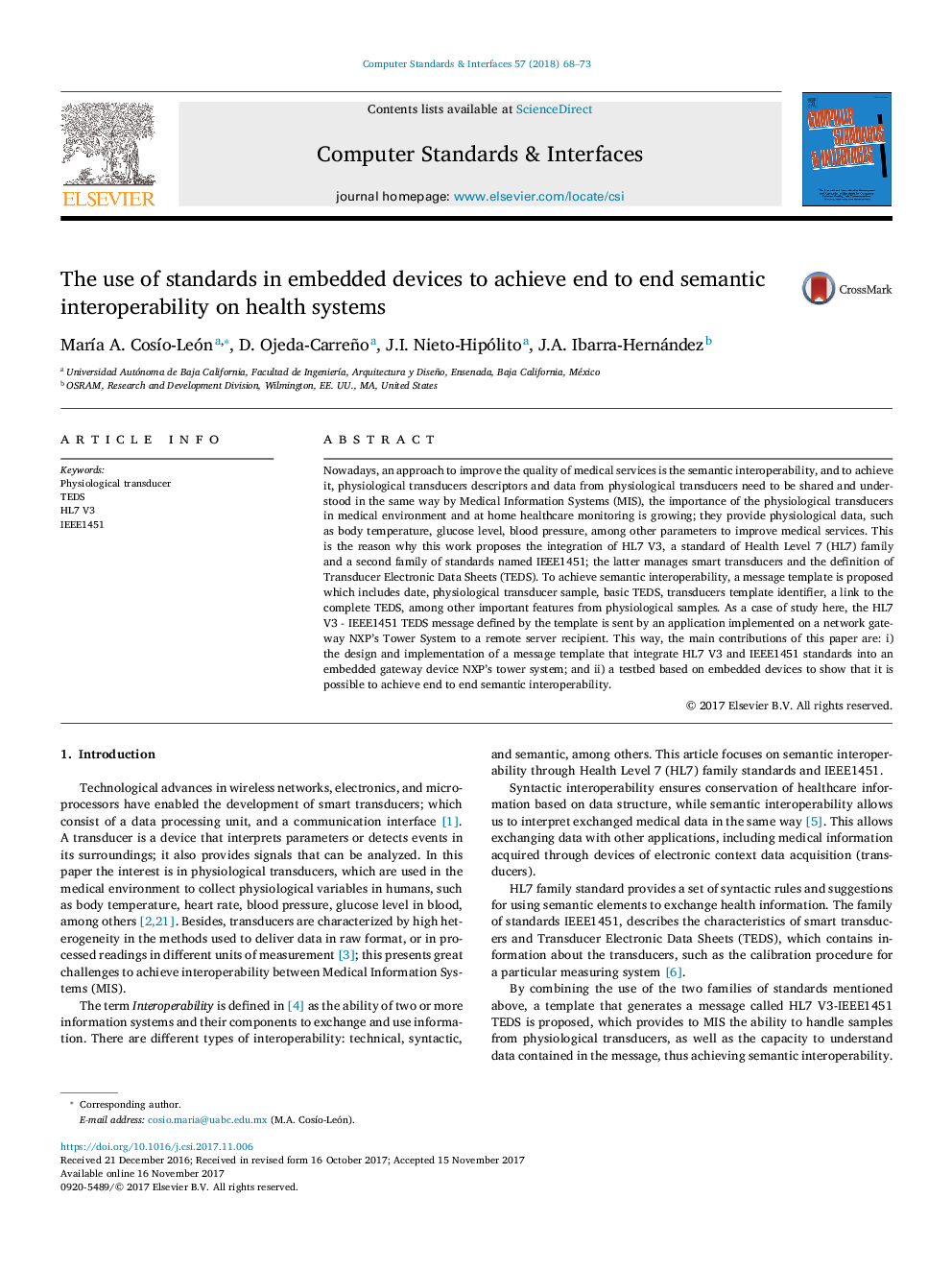ترجمه فارسی عنوان مقاله
استفاده از استانداردها در دستگاه های تعبیه شده برای دستیابی به تعامل عملی معنایی در سیستم های بهداشتی
عنوان انگلیسی
The use of standards in embedded devices to achieve end to end semantic interoperability on health systems
| کد مقاله | سال انتشار | تعداد صفحات مقاله انگلیسی |
|---|---|---|
| 82707 | 2018 | 6 صفحه PDF |
منبع

Publisher : Elsevier - Science Direct (الزویر - ساینس دایرکت)
Journal : Computer Standards & Interfaces, Volume 57, March 2018, Pages 68-73

